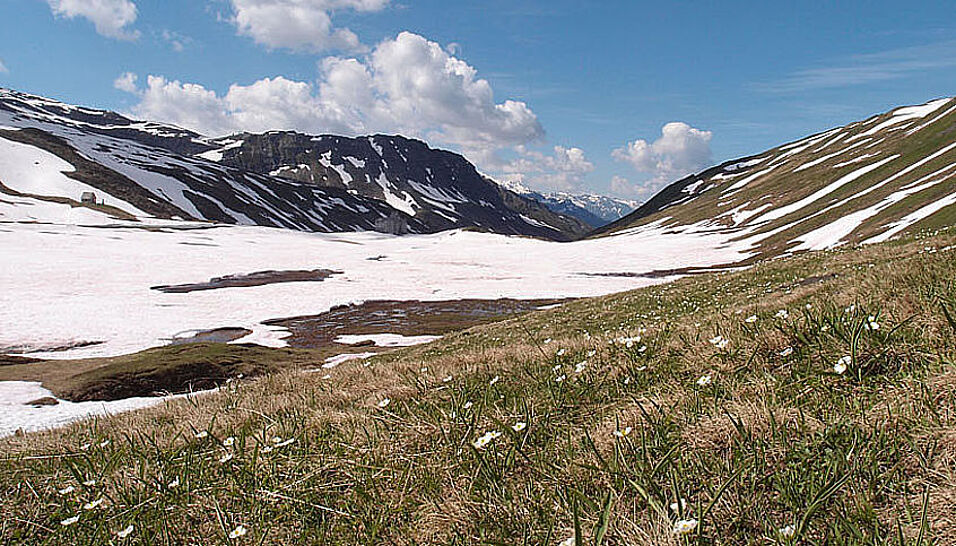This phenomenon, called “Geographical Parthenogenesis”, contradicts the predominance of sexual reproduction in nature and has long been enigmatic. Empirical studies on alpine plants are largely missing. The Frozen Niche Variation model predicts that niche specialization of different asexual genotypes would allow for a more efficient occupation of the available resource space. Asexuals might be therefore more successful in occupying their potential distribution range than sexual populations. The scientists around Bernhard Kirchheimer and Stefan Dullinger from the Department of Botany and Biodiversity Research of the University of Vienna and colleagues from the University of Göttingen explored the question of how the phenomenon of "Geographical Parthenogenesis" comes about.
Kirchheimer, B., Wessely, J., Gattringer, A., Hülber, K., Moser, D., Schinkel, C.C.F., Appelhans, M., Klatt, S., Caccianigia, M., Dellinger, A., Guisan, A., Kuttner, M., Lenoir, J., Maiorano, L., Nieto-Lugilde, D., Plutzar, C., Svenning, J.-C., Willner, W. Hörandl, E. & Dullinger, S. 2018: Reconstructing geographical parthenogenesis: effects of niche differentiation and reproductive mode on Holocene range expansion of an alpine plant. Ecology Letters. Doi: 10.1111/ele.12908

